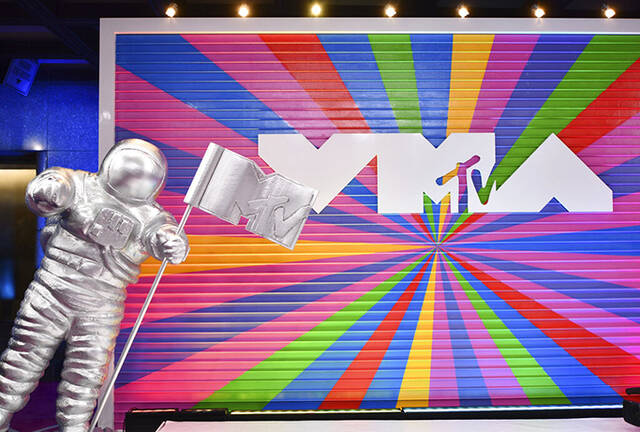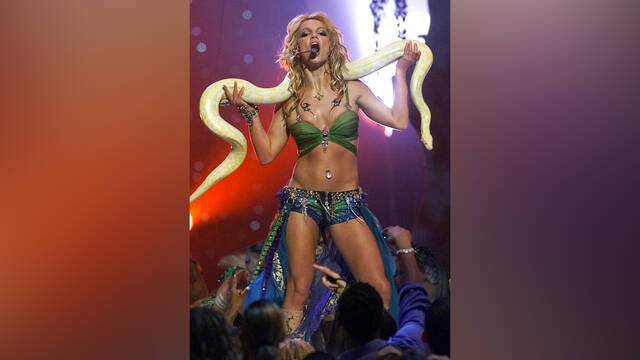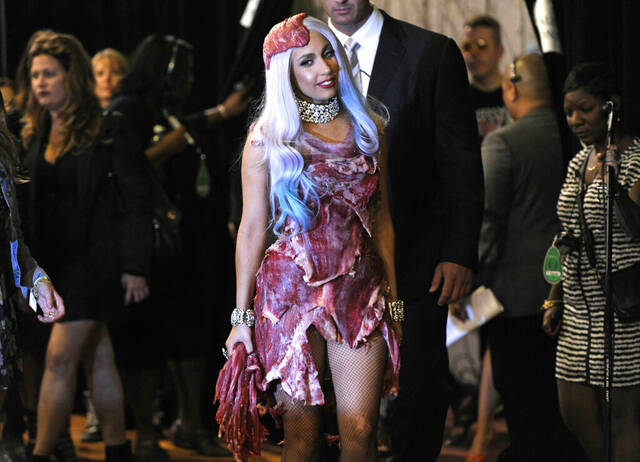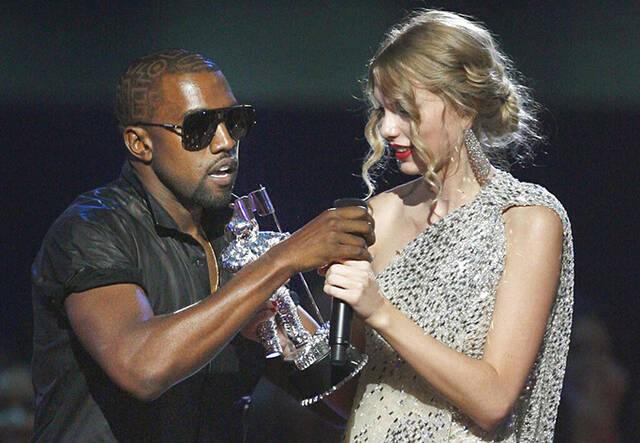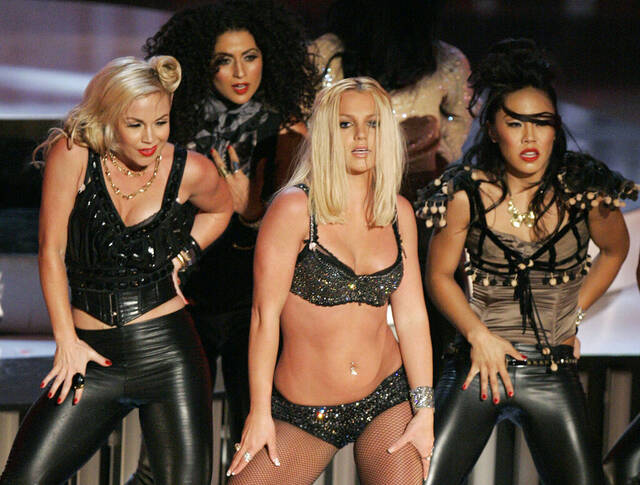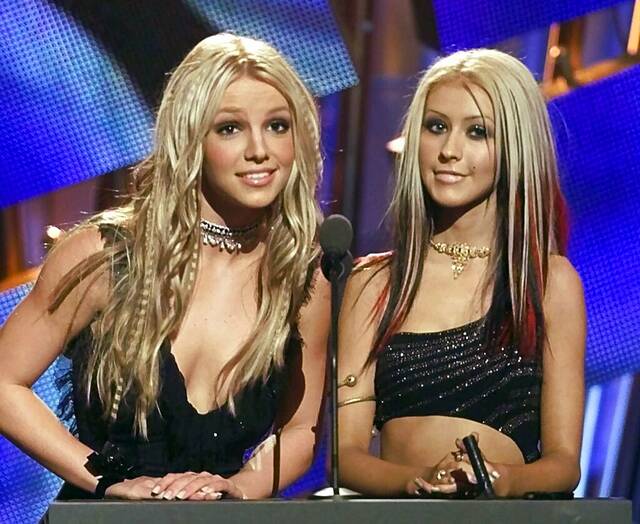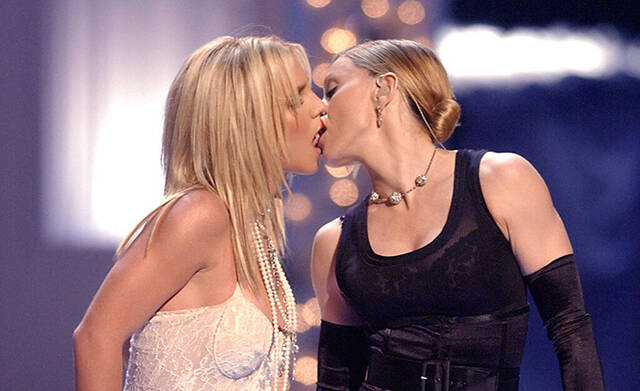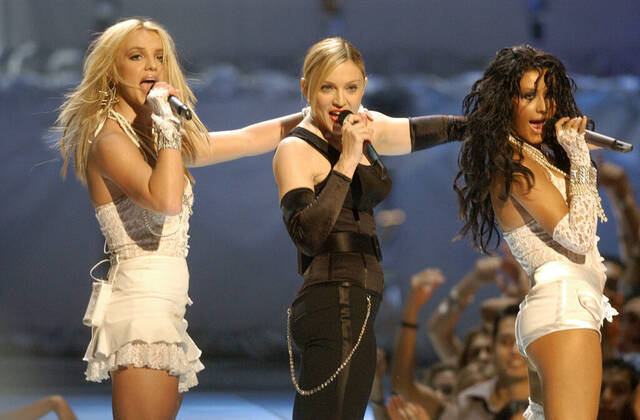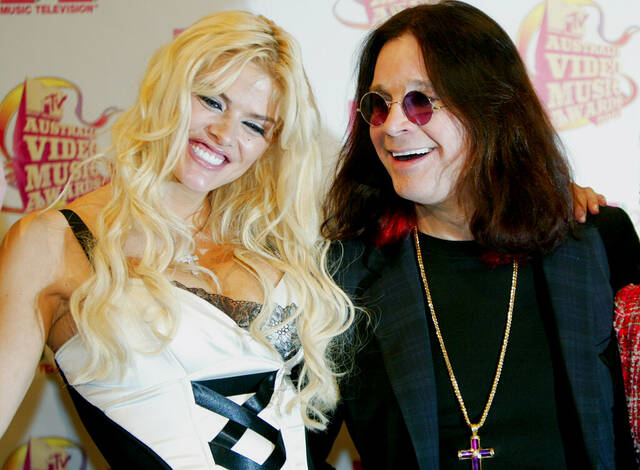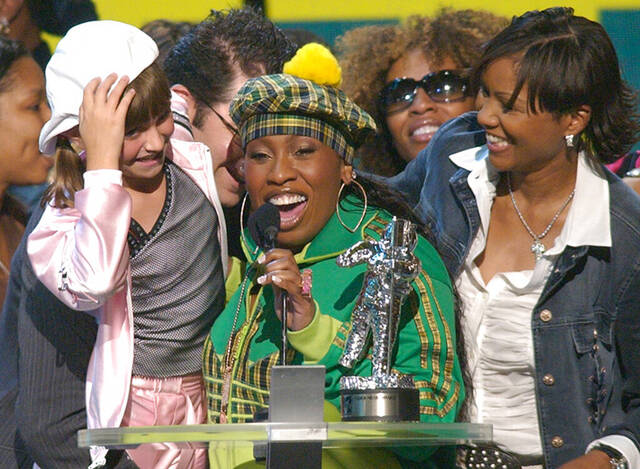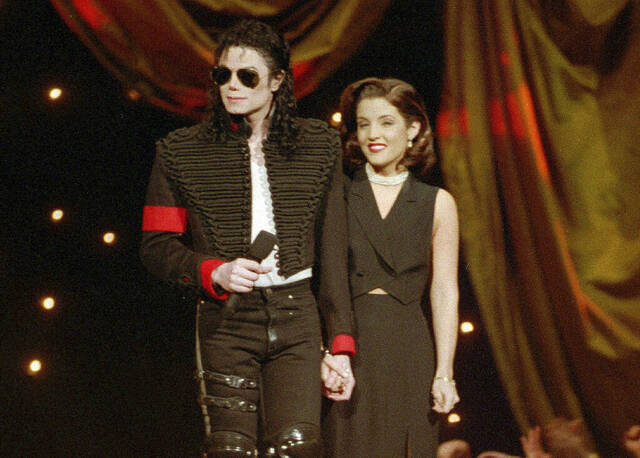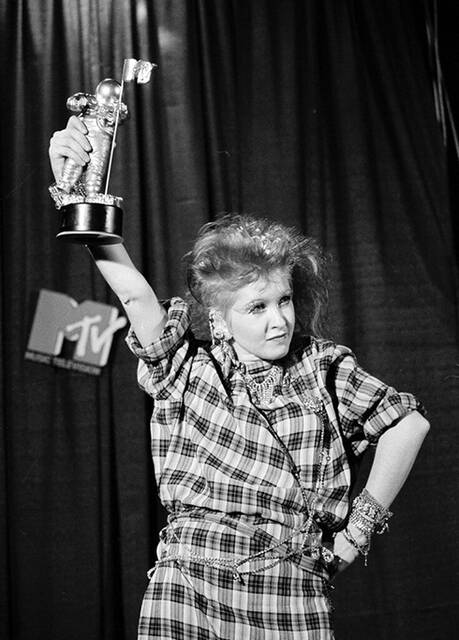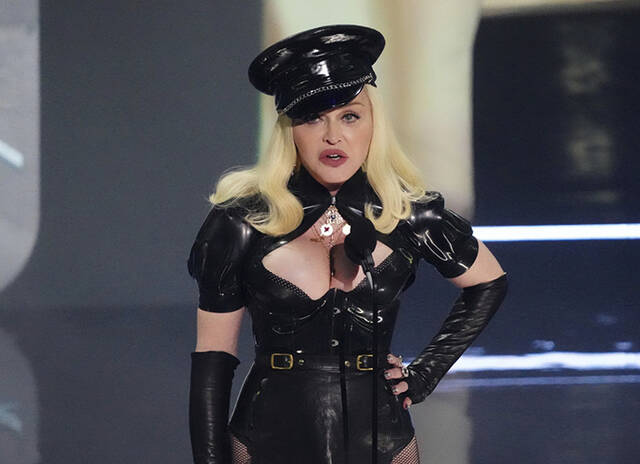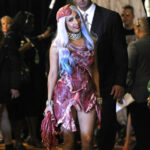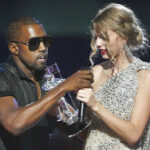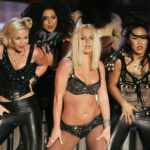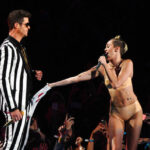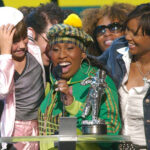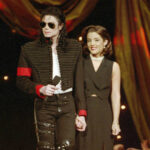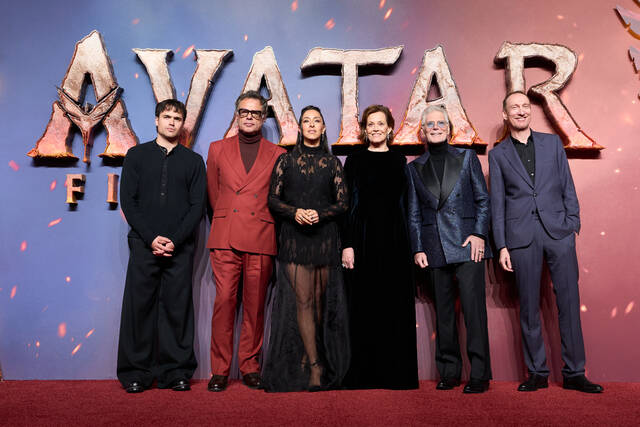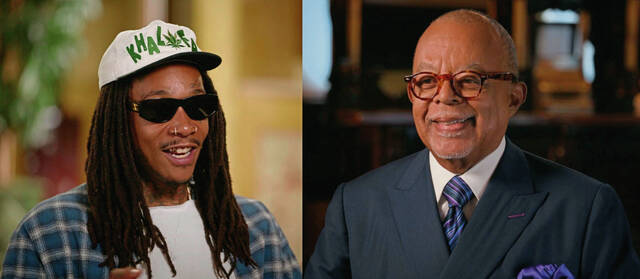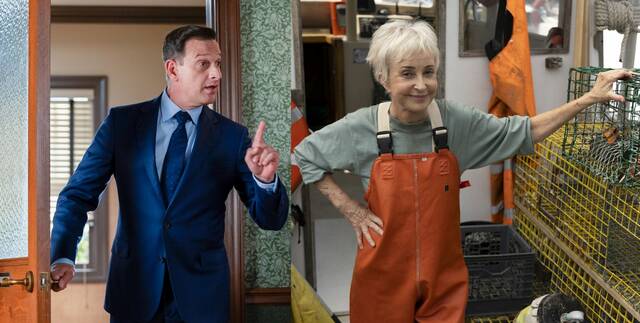On Aug. 1, 1981, MTV — which, at the time, stood for Music Television — burst forth onto screens, heralded by the melodies of The Buggles’ “Video Killed the Radio Star.”
That choice alone was an act of aggression, staking the station’s claim as the cutting-edge music media purveyor. Three years later, MTV further cemented itself as the arbiter of cool in music by producing the first Video Music Awards, essentially an updated Grammys that recognized the best in music videos.
This year, for the first time, the MTV Video Music Awards (VMAs) will air primarily on CBS, whose parent company, Paramount, also owns MTV. The show will be simulcast on MTV, as well as streaming live on Paramount+.
In many ways, MTV cemented music videos as an entertainment genre, capturing the attention and imaginations of Generation X, who still carry those memories.
Lisa Kennedy Montgomery was a controversial VJ on MTV in the 1990s, known simply as Kennedy. “At the absolute zenith, when I was there, there were videos that were well over a million dollars,” she said. “There were five, six, seven million-dollar video shoots. And big artists commanded a lot of money because if you actually won a Video Music Award, that meant something.”
Brent Malin, an associate professor of communications at the University of Pittsburgh, said that “today, it might be a little less revolutionary, because we have so many of these kinds of niche-marketed cable networks. But they really were kind of at the forefront of that sort of thing.”
Somewhere in the intervening 41 years, MTV dropped the meaning behind its name, music videos in general and the cool factor that came with them.
Video may have killed the radio star, but technology marches on and no one is cutting-edge for long.
The VMAs will be held Sept. 7 at UBS Arena in New York, the same venue where the 2024 awards were held. That broadcast saw an uptick in viewership to 4.09 million viewers, and Paramount hailed it as the most social ceremony that MTV has ever held, with 66.7 million social media impressions. Current big names, including Eminem, Chappell Roan, Sabrina Carpenter and Benson Boone, performed while rapper Megan Thee Stallion hosted.
This year, nominees include superstars Lady Gaga, Bruno Mars, Kendrick Lamar, Sabrina Carpenter and Bad Bunny. LL Cool J, a 57-year-old hip-hop legend, was announced as host on Aug. 14.
The VMAs hit popularity nadir in 2021, when fewer than a million people watched the awards. The year 2011, on the other hand, set the awards show’s ratings record, with more than 12 million viewers. Still, that number barely clears the highest ratings that MTV saw for reality programming such as “The Osbournes” or “Jersey Shore” at the height of those shows’ popularity.
These days, if you turn on MTV’s broadcast channel, odds are pretty good that you’ll be smack-dab in the middle of an episode of “Ridiculousness.” The comedy show where hosts make jokes about viral internet videos runs for between 12 and 18 hours a day on MTV — and has for several years.
So how did we get here? A few factors have moved MTV — which hasn’t stood for “Music Television,” or anything at all, since 2007 — from the channel where rock stars are born to, perhaps, a relic of the past.
‘We are living in a material world and I am a material girl’
When MTV launched, it was so inconsequential that its small staff had to leave New York City to watch its premiere in New Jersey — the network hadn’t been picked up in NYC. Music videos were still a fairly obscure concept in 1981, according to the book “I Want My MTV: The Uncensored Story of the Music Video Revolution” by Craig Marks and Rob Tennenbaum.
As with most things in early 1980s culture, it was Michael Jackson’s “Thriller” that changed everything.
For several years in the mid-1980s, MTV stuck to its format of music videos only, playing the most popular ones sometimes once an hour. But as the novelty began to wear off, it became clear that the format would require some adjustment.
Firstly, because MTV wasn’t the creator of the videos, it didn’t have sole rights to play them. That meant that anyone in broadcasting could copy the format. As Matthew Yglesias wrote in 2013 for Slate, it became clear that the channel needed original programming that they owned and could solely broadcast.
The first such originally produced program, “Remote Control,” was a game show that premiered in 1987. It would be far from the last.
The other consideration was segmenting their audience. By creating shows like “Yo! MTV Raps,” “Headbanger’s Ball” and “120 Minutes,” MTV had blocks of programming that specifically targeted fans of genres (rap, heavy metal and alternative rock, respectively). While these still focused on music videos, they found taste niches to hold audience attention at a scheduled time.
“What MTV figured out was, when their programming was dominated by music videos, most music videos are, what, three minutes long? If you were watching, when you saw a music video you didn’t like, you’d just change the channel,” said Malin, the Pitt professor.
That’s also part of why reality TV shows, including “The Real World,” became such a massive part of MTV’s brand starting in 1992. The music videos were shunted aside for longer-form original programming that held the attention of viewers and was inexpensive to make.
Kennedy was a VJ on MTV starting in 1992. She recalls that it was strange, starting with the network the same year that “The Real World” premiered.
“It was the first year that they realized that long-form programming could drive revenue,” she said. “They didn’t really keep the visionaries around who saw that the media landscape would change to the point where — with the advent of social media and the internet — people would be able to find videos wherever they wanted.”
“MTV really boxed themselves out of existence, in a way,” she added.
While nostalgia for the music video era of MTV is still strong among Generation X and elder Millennials, that was a relatively brief period in the network’s history. VJs and shows such as “Total Request Live” were a part of the cultural zeitgeist into the new millennium, but there was a sharp reduction in the amount of music videos played. MTV dropped the name “Music Television” in 2007.
“MTV really has always been what they call a ‘second-choice network,’ ” Malin said. “They understand that they’re not necessarily the place that people go to first. And maybe that was even a little more pronounced in the music video era.”
Kennedy was shocked as to why MTV doesn’t leverage more of its legacy programming, which would still be popular with viewers looking back on days gone by.
“I see that in my own career,” she said. “I see interest in stuff that I did now more than 20 years ago.”
She was most well-known for hosting the late-night program “Alternative Nation.” These days, she’s a political commentator on Fox News and other outlets. Her podcast, “Kennedy Saves the World,” can be found on Fox News Audio.
“I was just talking to a friend of mine who has run various cable networks, and he said he wouldn’t be surprised if MTV is no longer offered on a basic or premium cable package, and if it just goes to Paramount+,” she said.
In the modern age, those networks have to contend with streaming services that allow viewers to watch whatever they want, any time. In a 2023 interview with Vulture, Paramount’s president and CEO Chris McCarthy said that networks now have to cater to those who consistently watch “linear television” — viewers who will turn on their TVs and leave them on for long blocks of time.
McCarthy said that those viewers tend to be older and prefer consistent programming.
“They’re on linear because they don’t want it to change,” he said. “And what they love more than anything on MTV is ‘Ridiculousness.’ ”
The VMAs: A history of controversy
One of the most iconic images in the history of the MTV Video Music Awards comes from its first-ever show in 1984, when a fresh-faced Madonna sang “Like a Virgin” while rolling around the stage in a wedding dress and a “Boy Toy” belt.
While this might seem downright tame today, it was a bold statement from an artist who would court controversy throughout her long career. And it would also set the stage for the VMAs to be the cutting-edge awards show full of wacky behavior that generated plenty of conversation.
Madonna created similar controversy during the 2003 MTV VMAs when Britney Spears and Christina Aguilera joined her onstage during a medley performance, dressed as brides in tribute to her 1984 performance. At the end of the segment, Madonna leaned in to kiss both Spears and Aguilera before leaving the stage.
In 2013, both Miley Cyrus and Robin Thicke got plenty of heat for their joint performance, where a much younger Cyrus twerked suggestively up against Thicke.
There have also been a number of “wardrobe malfunctions” in the VMAs’ history, though they were mostly intentional. Adding another shocking moment to her VMAs arsenal, 2015 show host Miley Cyrus revealed a bare breast by pulling aside a curtain during a backstage segment of the show. In 1991, Prince performed his song “Gett Off” in a yellow jumpsuit that appeared to show his bare rear end when he turned around. (It was actually flesh-colored mesh panels; there was no real nudity.)
Then there are the celebrity beefs that originated — or heated up — during the awards, including Kurt Cobain vs. Axl Rose in 1992; Courtney Love vs. Madonna in 1998; Eminem vs. Moby (and Triumph the Insult Comic Dog) in 2002; and most infamously, Kanye West vs. Taylor Swift in 2009.
The move to CBS may put a damper on the anything-could-happen draw of the VMAs, according to Malin. “Being broadcast on a broadcast network is very different than being shown on a cable network like MTV,” he said. “FCC regulations around broadcasting apply to a broadcast network, but they don’t apply to cable networks.”
That means that while the VMAs in 2025 might be seen by a broader audience, they may also be more tame, removing one of the traditional hallmarks of the show.
Do the VMAs have a future?
By moving the VMAs to broadcast TV, Paramount may be signaling a desire to continue the awards outside of the MTV bubble. So do the VMAs have a future, even if MTV does not?
While no official reason has been given for the VMAs’ move to CBS, this appears to be in line with network strategies to bring the more popular programming from cable networks to a wider audience.
According to Malin, it depends on whether music videos themselves maintain popularity, even if the network that really brought the medium to the mainstream doesn’t.
“Are people still going to make music videos? I think they probably will,” Malin said. “It’s a good way to get publicity for a song.”
Music videos are still widely watched on YouTube and other streaming sites. The video for Luis Fonsi’s 2017 hit “Despacito,” for example, currently has about 8.8 billion streams on the platform.
“As long as you’re making them, maybe it’s useful for people to get awards for their music videos to help promote them further,” Malin added.
He sees the move to CBS as a possible sign of confidence from the network. “Maybe they see some value in this music video award.”
Kennedy is a little more skeptical about the VMAs’ future.
“The VMAs now, it’s really just about the red carpet. It’s really just about seeing who shows up because so many of the people who show up are influencers.
“I think it’s weird that it’s going to CBS,” she added. “That feels very, very odd to me. That’s a major media company trying to find its way. Maybe someone there is smart enough to tap into the nostalgia.”
It’s possible that the Video Music Awards — in whatever form they may take in the hands of Paramount — may be the lasting legacy of a pioneering network that’s long since abandoned its roots. Maybe the video star isn’t dead just yet, even if they don’t get play on MTV.


